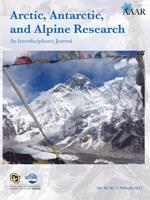For the Sami people, place names provide the basis for the transmission of a cultural landscape, through an oral way of mapping built around narratives and the designation of specific landmarks. Based on interviews with members of a mountain-based reindeer herding community in Sweden, we found that their transmission is today ensured through continued oral tradition but also by the increasing use of maps. However, because they follow the western cartographic tradition, official maps are unable to express the continual renewal of Sami place names and the land features that are meaningful to the Sami, and thus fail to convey toponymic knowledge. Inscribing place names on maps transforms them into mere labels: toponymic knowledge has to be transmitted along with its context of emergence, situated at the crossroads of cognitive, perceptive, emotional, and social dimensions. There is an urgent need to conceive new forms of cartography that can guarantee the transmission of toponymic knowledge to future generations, maintaining the relationship that binds the Sami to their environment.
How to translate text using browser tools
1 February 2017
Sami Place Names and Maps: Transmitting Knowledge of a Cultural Landscape in Contemporary Contexts
Sarah Cogos,
Marie Roué,
Samuel Roturier





